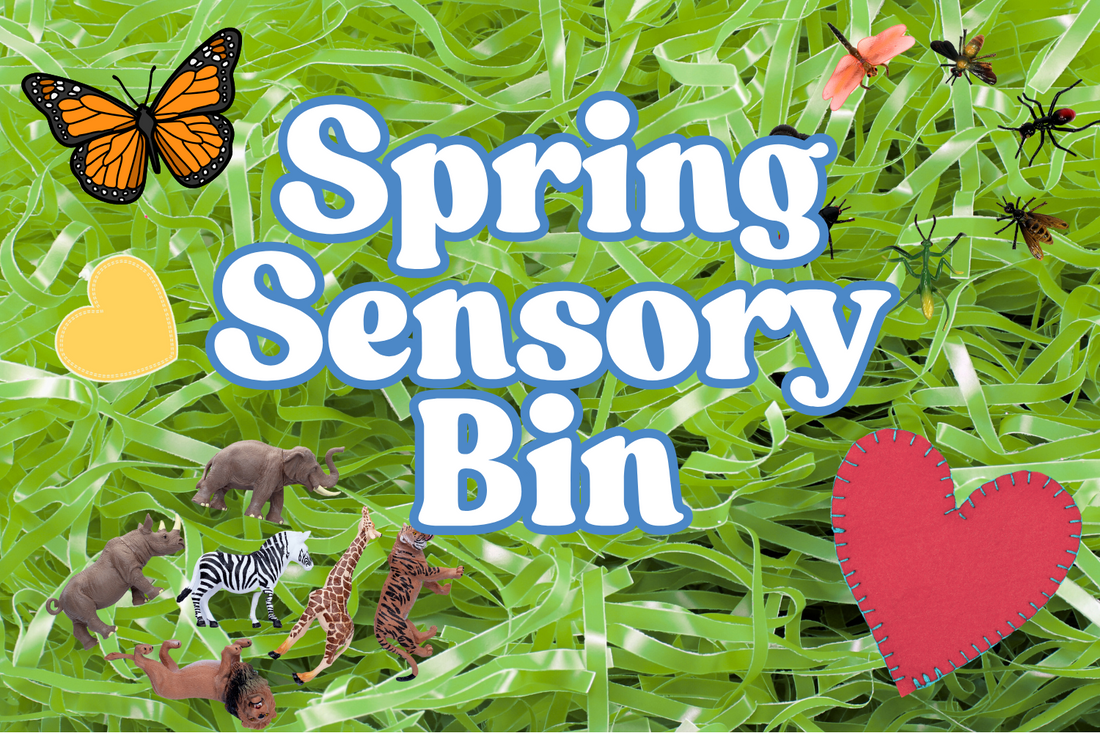
Cómo crear un contenedor sensorial con temática de primavera que fomente el desarrollo del lenguaje
Los contenedores sensoriales no tienen por qué ser complicados ni llevar mucho tiempo. Puedes construir uno en minutos con materiales que ya tienes o tomarte tu tiempo seleccionando las piezas perfectas para los intereses de tu hijo. Esa es la belleza del juego sensorial: no hay una única manera de hacerlo.
Al observar lo que atrae a su hijo (texturas, colores, movimiento), puede crear experiencias que no solo entretengan sino que también desarrollen el lenguaje, la concentración y la autorregulación.
A continuación se presentan tres beneficios clave de usar contenedores sensoriales para apoyar el desarrollo de su hijo:
- Aprender nuevas palabras mientras se divierte : los contenedores sensoriales ofrecen oportunidades naturales para desarrollar vocabulario, describir, solicitar y contar historias.
- Cómo manejar los sentimientos fuertes : Recoger, clasificar y explorar ayuda a los niños a calmarse y sentirse más en control.
- Resolución de problemas y concentración: fomentan la curiosidad, la resolución de problemas y el pensamiento imaginativo de forma práctica.
A continuación, se explica cómo construir un contenedor sensorial con temática de primavera que sea novedoso, factible y rico en lenguaje .
** Esta publicación contiene enlaces de afiliados de Amazon, lo que significa que gano una pequeña comisión si realiza una compra a través de ellos, sin costo adicional para usted.
🌿 Paso 1: Elige tu base
Empieza con un relleno que marque la escena. Solo necesitas 1 o 2 tazas.
🥦 Paso 2: Agrega objetos con temática de primavera
Mezcle elementos pequeños y seguros que desarrollen el vocabulario y el interés sensorial:
- Insectos de plástico, mariposas, mariquitas.
- Mini flores (de tela o fieltro )
- Herramientas de pala
- Pompones (polen, brotes, nubes)
- Animales de juguete (conejos, pájaros, abejas)
- Cartones o nidos de huevos
🛒 Consejo: Mira en https://www.target.com/ Sección Bullseye, https://www.michaels.com/ contenedores de manualidades o su tienda de dólar local para encontrar artículos de primavera a bajo costo.
📝 Paso 3: Usa inicios de oraciones para guiar el juego
Los contenedores sensoriales abren la puerta al lenguaje, pero a veces los niños necesitan un poco de chispa. Prueben estas frases abiertas para empezar a jugar:
Describiendo:
- “Veo un _____. Es _____.”
- “Esta flor se siente _____.”
- “El insecto está _____ la hoja.”
Comparando:
- “Éste es más grande que _____.”
- “Ambos tienen _____.”
Juego imaginativo:
- “Supongamos que la abeja está buscando _____”.
- “El conejito quiere _____.”
Solicitando/etiquetando:
- “¿Puedo tener el _____?”
- “Encontré el _____.”
🎧 Bono Bilingüe:
Apoye a las familias hispanohablantes o a los estudiantes de dos idiomas con indicaciones sencillas:
- “¿Dónde está la mariposa?” / ¿ Dónde ¿está la mariposa?
- “Reguemos la flor” / Vamos a regar la flor
- “ El conejo está debajo de la hoja” está debajo de la hoja
Consejo : Mantenlo fresco
Cambie uno o dos objetos por semana para mantener a los niños interesados y ampliar su vocabulario. Agregue:
- Pequeñas botas de lluvia o piezas de paraguas
- Lentejuelas para gotas de lluvia
- Pequeños paquetes de semillas o verduras de imitación
💬 Reflexiones finales
Un contenedor sensorial es más que un contenedor. Es un minimundo que desarrolla la motricidad fina, la narración, la interacción por turnos y el lenguaje expresivo, sin necesidad de pantallas .
